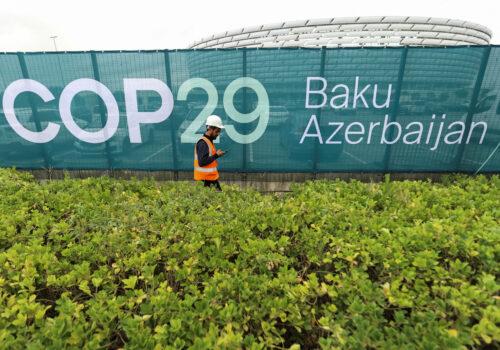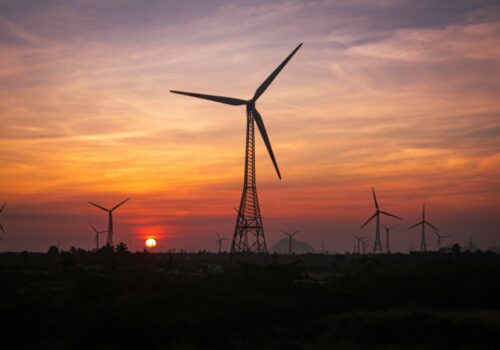To solve the climate crisis, the world doesn’t just need a new international framework. It needs a new economic model.
The conclusion of the twenty-ninth United Nations (UN) climate change conference (COP29) in Baku, Azerbaijan, has sparked varied reactions regarding its effectiveness in addressing the climate crisis. While the adoption of the New Collective Quantified Goal (NCQG) raises critical questions about the efficacy of such approaches in combating climate change, it is regarded by many as a savior for multilateralism, which many countries view as essential for dealing with this crisis. But the more important question is this: Does it work?
Since the inception of the UN Framework Convention on Climate Change (UNFCCC) in 1992, the international community has pursued both top-down and bottom-up approaches to address climate change. The Kyoto Protocol of 1997 exemplified a top-down approach, imposing legally binding emission-reduction targets on developed nations. However, its impact was limited due to several large emitters not participating. This included the United States, which withdrew its support, and Canada and Australia, which later followed suit.
The Paris Agreement was the next major multilateral effort. After years of extensive negotiations, countries reached a breakthrough in drafting a new legal instrument to address the climate crisis in 2015. Unlike previous frameworks that primarily targeted industrialized nations, this new approach aimed to be universal. It marked a fundamental shift in multilateralism: Instead of setting international norms and obligations to be implemented at the national level, this strategy reversed the process. The global effort would now be the collective sum of what individual nations commit to at the national level—a bottom-up model rather than the traditional top-down approach, allowing countries to set their own emission reduction targets, known as Nationally Determined Contributions.
The current global economy is overly focused on profit generation and wealth accumulation, often at the expense of sustainability.
The Paris approach was aimed in part to accommodate the United States, where domestic political dynamics resist externally imposed mandates (US lawmakers and politicians do not accept that other countries can dictate how the US economy should be run). Todd Stern, the former US special envoy for climate change and one of the architects of the Paris Agreement, explained in a recent podcast that a major objective was to design an agreement that the United States could join without repeating its usual pattern of negotiating terms only to back out later. The Paris Agreement, tailored to accommodate the US context, successfully brought the United States on board initially. But despite initial widespread participation, the United States withdrew from the Paris Agreement in 2017 during the first Trump administration, then rejoined in 2021 during the Biden administration. The return of President-elect Donald Trump to the White House is likely to see the United States again leave the agreement.
Both approaches—top-down and bottom-up—have now been attempted in global climate governance. The Kyoto Protocol embodied the former and the Paris Agreement introduced the latter. While progress has undoubtedly been made, much of it attributable to the Paris framework, the world is still falling short of what is necessary to achieve the ultimate goal of limiting global temperature rise. The recent NCQG aims to mobilize $300 billion annually by 2035 to assist developing countries. However, this figure falls far short of the estimated $1.3 trillion per year that experts deem necessary to limit global temperature rise to 1.5 degrees Celsius above preindustrial levels.
Why, despite deploying these two fundamentally different approaches, has the multilateral system failed to deliver at the required scale?
The root cause, in my view, is that leaders are not focused on the heart of the problem of the climate crisis, which lies in the underlying global economic model. The current global economy is overly focused on profit generation and wealth accumulation, often at the expense of sustainability. This profit-driven model not only fuels the climate crisis but also creates systemic barriers to meaningful international cooperation and transformative change. It is a significant barrier to progress in achieving sustainable development since it treats natural resources (land) merely as factors of production rather than as integral components of ecosystems. In the current economic model, the four factors of production are: capital, human resources, land and natural resources, and entrepreneurship. This perspective leads to environmental degradation and hinders sustainable development. Economists such as Joseph Stiglitz and Thomas Piketty have advocated rethinking this model to prioritize ecological sustainability, social well-being, and more equitable development.
I tried myself in 2013 and 2014, in the context of my participation in the UN General Assembly’s Open Working Group on the Sustainable Development Goals (SDGs), which discussed and developed the SDGs, to draw attention to and bring the focus on the need to address systemic issues and reengineer the global economic model. I made this case because I believe it is necessary to truly achieve sustainable development. Unfortunately, my calls did not resonate as much as I would have hoped.
Large corporations, often through influential governments, resist systemic changes that could disrupt profit margins. The Paris Agreement sought to signal to corporate and investment circles that they needed to initiate transitions toward sustainability. While some progress has been made on this front, the transition lacks the necessary depth, speed, and equity. The current economic “software” still prioritizes profit maximization, impeding the rapid and comprehensive changes required. So, like any software, the economic machinery will follow and execute, no matter what we do. We need to rewrite the software.
A new economic model addressing climate change while prioritizing environmental and ecosystem conservation would integrate principles of sustainability, inclusivity, equity, and resilience. It should assign economic value to ecosystems (e.g., carbon sequestration, water purification, biodiversity), encourage investments in natural capital, promote a circular economy to minimize waste and maximize resource efficiency, and focus on transitioning from fossil fuels to renewable energy sources. In order to decouple emissions from economic development and growth, massive investments and resources should be directed at accelerating and scaling up technological solutions.
Every year, the climate crisis gets worse. To effectively tackle this crisis, it is imperative to reengineer the economic model to prioritize the wellbeing of people and the planet rather than profit generation. This shift is urgent and essential for achieving sustainable development and ensuring that multilateral efforts yield tangible and meaningful outcomes. Time is not on our side.
Mohamed Khalil is a senior Egyptian diplomat and expert in sustainable development and climate policy. He has played a key role in international climate negotiations, from COP17 in 2011 till COP29 in 2024, particularly regarding achieving the Paris Agreement in COP21 in 2015, shaping policies on climate adaptation, mitigation, and sustainable financing.
Further reading
Tue, Nov 12, 2024
What Trump’s return as president means for COP29
New Atlanticist By Jorge Gastelumendi
If the United States ends critical climate-related policies and investments, then even more Americans’ health, finances, and safety will be at risk.
Tue, Oct 15, 2024
Attention to market realities are key to a successful COP29
EnergySource By
Increasing funds for addressing climate and energy needs in developing countries is a COP29 priority. But it is important to remember that market conditions in recipient countries are critical in determining the success of such efforts.
Wed, Nov 6, 2024
Tackling the energy-water challenge at COP29
EnergySource By Robert F. Ichord, Jr.
Energy and water have a complex and inextricable relationship, especially as growing populations, expanding cities, and the changing climate strain resources around the globe. Leaders at COP29 must come together in Baku to promote policies, strategies, and investments to meet the water and energy challenge.
Image: Flags fly near a venue of the COP29 United Nations climate change conference, in Baku, Azerbaijan November 20, 2024. REUTERS/Aziz Karimov


